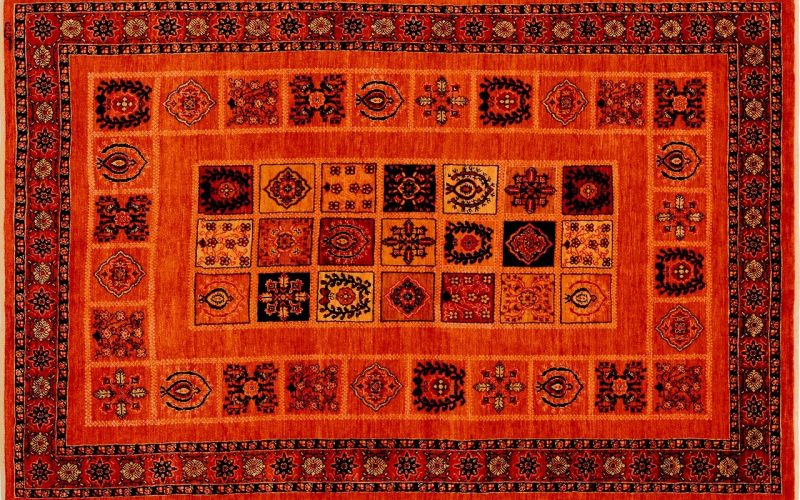Are you looking for a lovely flooring surface for your home? If so, you should carefully consider the many different types of carpets available.
In recent years, hardwood has been the flooring of choice for many people; nevertheless, carpet has numerous advantages and is better suited to specific house sections than some types of wood, tile, or laminate.
However, carpeting lends a softness to an aesthetically pleasing and practical room.
It works well in bedrooms and playrooms because it provides a warm and pleasant feeling against bare feet and a soft and cushiony surface for newborns and toddlers to crawl on or tumble down on.
Because there are so many various types of carpets, deciding which one is best for your house and budget can be difficult.
Each type of carpet is best suited to specific rooms and parts of the home.
The correct carpet can also ensure functionality while reducing cleaning and maintenance requirements.
Here’s everything you need to know about different types of carpets before you select the right carpet for your needs.
1. Nylon Carpet
Since 1935, nylon carpet has been a popular choice for house flooring. Nylon is one of the most common carpet fabric types in homes today because it is incredibly soft, resistant to wear, resilient, and difficult to stain permanently.
Nylon carpet retains color well, so what you buy today will likely appear the same in ten years. A decent nylon carpet can endure for up to 15 years with normal wear and tear in a family home.
Numerous cut pile and loop pile nylon variants exist to choose from, depending on your softness and density preferences. Furthermore, nylon is naturally crushed, abrasion- and mildew-resistant, and well-resists oil and grease stains.
2. Olefin Carpet
Olefin is a polypropylene compound also known as polypropylene. It is a synthetic alternative to Wool since its fibers resemble natural Wool but are less expensive.
This type of carpet is prevalent in commercial establishments, with some figures estimating that it accounts for over 80% of carpets in these settings.
It is also becoming increasingly popular for household applications, ranking second to nylon carpet sales. Although slightly less expensive than nylon carpet, it does not perform well.
It has excellent stain resistance, yet it holds onto oils to which dirt will attach when soiled.
Furthermore, despite its susceptibility to soiling, olefin cleans well and can even be bleached in some cases.
Olefin is widely used for level-loop carpets such as Berber because it is robust and withstands heavy foot activity well.
This carpet is more expensive than polyester or acrylic carpets. Sun exposure can damage it, so avoid using it in brightly lit environments.
3. Wool Carpet
Wool is a natural fiber with numerous advantages, but these come at a cost. This high grade comprises many densely woven threads, making it stain-resistant.
It is the softest carpet fabric and feels incredibly lovely on bare feet.
Pure wool carpets are especially beneficial for allergy sufferers because they are made without chemicals or additives.
However, wool is one of the different types of carpet. Due to its high cost, wool is not a popular carpet material for most people.
It is also susceptible to mold and mildew as a natural fabric because these fungi feed on organic components.
Wool carpet is, therefore, unsuitable for regions with significant humidity or moisture problems.
Some lower-quality wool carpets are available at lower prices, but if the wool carpet is not constructed from the highest grade of Wool, it is particularly prone to stains.
In addition, Wool is ideal for allergy sufferers because it contains no chemicals or additives. However, Wool should be kept with less humidity and moisture, such as in the bedroom, because it is prone to mildew, and a wool carpet should not be used outside.
4. Acrylic Carpet
Acrylic is one of the different types of carpets, sometimes called “synthetic wool,” because it has the feel and appearance of Wool at a fraction of the cost.
It is also resistant to static electricity, dampness, mildew, fading, and stains. However, it is not a long-lasting substance and does not fare well in high-traffic regions. It is occasionally combined with Wool.
Acrylics can sometimes turn brown when stained with alkaline chemicals in cleaning agents.
5. Polyester Carpet
Polyester is a low-cost synthetic carpet fabric with various advantages. It is one of the most extraordinary carpets for dyeing because it retains brilliant colors exceptionally well.
Polyester is an attractive choice if you want a carpet color that will last a long time and resist fading. It is stain-resistant and moisture-resistant, which means it is effective against mold and mildew.
It is simple to clean but retains oils, which can cause dark areas and unclean markings. Polyester carpet is non-allergenic, making it an excellent alternative for allergies.
The most discouraging aspect of polyester carpets is how readily they may become flattened. If you place this carpet in a high-traffic area, you should expect it to look worn out quickly.
It also flattens readily underneath furniture, which might be ugly if you rearrange it.
6. Triexta Carpet
Triexta carpet is one of the different types of synthetic fiber carpets and is relatively new to the market, though it has gained appeal compared to nylon carpets in recent years.
This is renowned for being tough and durable, even more so than nylon, previously considered the most vital synthetic carpet available. It is also stain-resistant, making it an excellent choice for homes with pets or children.
7. Loop Pile Carpet
Loop pile is one of the different types of carpets, also known as “uncut pile” or “Berber pile” (called after a specific style of knotted pile used in North Africa), leaving the entire yarn loop intact on the piece’s surface.
These carpets are exceptionally durable, easy to clean, and stain-resistant, making them ideal for high-traffic commercial applications or high-traffic family areas such as recreation rooms. In addition, loop pile carpets do not reveal footprints or vacuum marks.
In addition, Loop pile carpet is available in various styles, including level loop, in which the fiber loops are all the same length, and patterned loop, in which the loops are varying heights.
A carpet can also be made with a cut-and-loop construction, in which certain fibers are cut, and others are looped.
8. Cut Pile Carpet
Cut pile is a carpeting style where the exposed fibers are sheared off. This usually results in soft, inviting, and easy-to-clean carpets.
Changing the shearing angle that slices the loop or applying different treatments on the thread before and after it is placed into the backing can produce a variety of styles.
Cut pile carpets come in various lengths and thicknesses. They work well when carpeting an entire house because they integrate smoothly from room to room.
On the disadvantage, chopped pile makes footmarks and vacuum tracks more visible.
Twisting the strands can help lessen this propensity. The twist in the individual threads helps the carpet resist matting and crushing.
The greater the twist, the more resistant the carpet to matting. A heavy twist also creates texture, which helps conceal wear and filth.
9. Plush Pile Carpet
This design, also known as a velvet-cut pile, is a cut pile variation in which the fibers are even shorter than in a Saxony cut and very densely packed.
This results in a rich and beautiful carpet surface. Unfortunately, this carpet style is somewhat volatile.
The velvet carpet pile is prone to wearing down, scuffing, and exposing footprints. Thus, it should only be utilized in high-end, low-traffic areas.
10. Textured Cut Carpet
The phrase textured-cut pile refers to a cut-pile carpet with varying lengths of fibers.
They are also twisted into spiral strands using a specific steam process that turns the individual strands and keeps them kinked.
This form is often known as “trackless” since it does not exhibit footprints or other markings on its surface like different cut piles, such as Saxony.
Because spiral strands do not reflect light and straight strands, it is less obvious when spirals are broken down. This pile is appropriate for medium to high-traffic locations.








